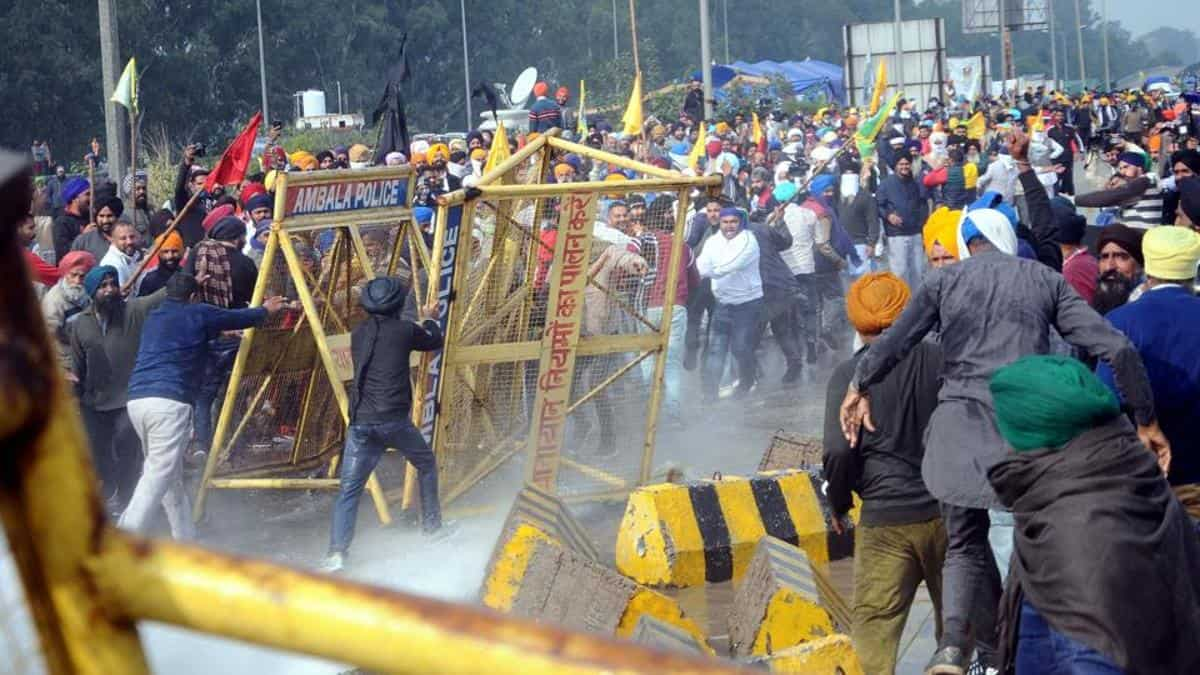Large-scale peasant protests and conflicts around New Delhi, India, continue to escalate
On November 26th farmers from Haryana, Uttar Pradesh, Punjab and other places around the Indian capital New Delhi poured into New Delhi to demonstrate. Protests continued on the 27th.
At present, the protesters are being surrounded by the police on the border between New Delhi and other states. Heavy clashes are still going on, and no casualties have been reported.
Indian media reported that the central government of India may talk to the protest organizers on December 3 to negotiate related matters.

According to many Indian media reports, most of the protest farmers came from Punjab, India. At present, the capital New Delhi has closed all border areas with other states, and many subway entrances and exits in New Delhi have also been closed due to farmers’ protests.
The police were heavily armed and set up roadblocks to prevent the protesters from moving forward.
In addition, the police also used tear gas and high-pressure water cannons to try to disperse the protest farmers, but the farmers broke through the multi-layered roadblocks and continued to march to the capital.

Protesting peasants accused the police of blocking their march to New Delhi. Farmers protested that leaders threatened to block the road to New Delhi if they blocked their way to New Delhi.
Chief ministers in Punjab and New Delhi expressed support for peaceful demonstrations by farmers, accusing the police of wrongly using tear gas and high-pressure water cannons.

According to incomplete statistics, farmers from about 30 organizations participated in the protests, and the conservative figure is about 125,000.
In order to ensure that the protests can continue in New Delhi, protesters have also made a lot of preparations, including tractors, motorcycles, food, woolen clothes, blankets, folding beds, vegetables, large cooking utensils, gas bottles, etc.
Protest leaders say they are ready to fight a protracted war, and the protest may last for one month.
The number of farmers joining the protest in Punjab is still increasing. Local farmers drove tractors and carts, full of necessities, and joined the protest demonstration called “Towards New Delhi”.

For the past two months, Indian farmers have been protesting against the “Farmers Act” passed by the central government of India by blocking roads, railways, etc.
On September 20, the Rajya Sabha (Upper House) passed the Agricultural Trade and Commerce (Promotion and Facilitation) Bill 2020 and the Farmers (Authorization and Protection) Price Guarantee Agreement and Agricultural Services Act 2020, plus the previously passed Basic Commodities (Amendment) Bill 2020
Which caused Strong opposition from farmers in Punjab and Haryana, the agricultural provinces, as well as opposition figures in India.
Protesters fear that these bills will undermine the current “minimum support price” (MSP) system and put farmers at the mercy of large companies. But the Indian government claims that the “minimum support price” system remains unchanged, and the new bill will bring higher profits to farmers.
Indian Prime Minister Modi also repeatedly assured farmers that these “very historic” bills would benefit farmers, because they would reduce the power of intermediaries and allow farmers to freely sell their products in more profitable places.



